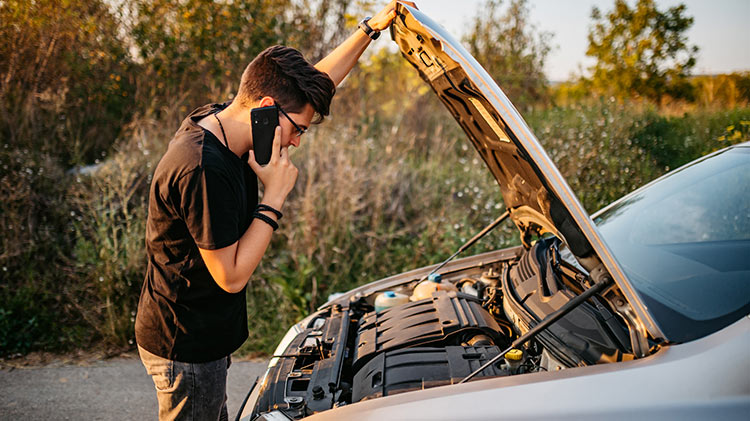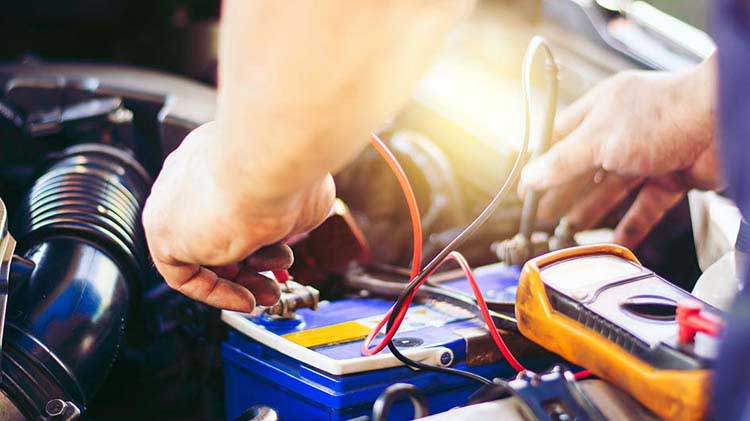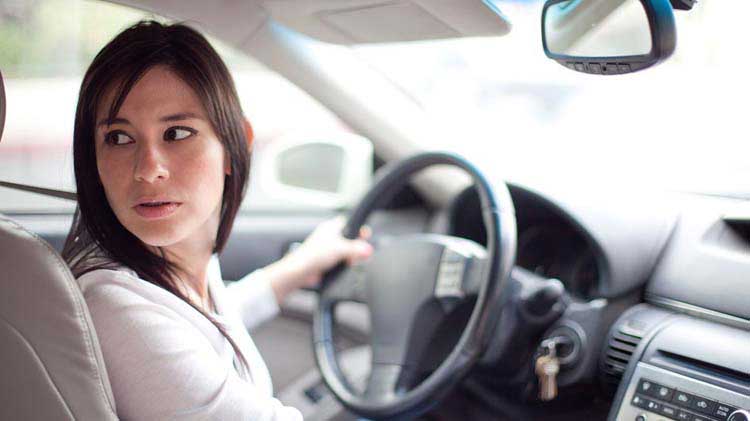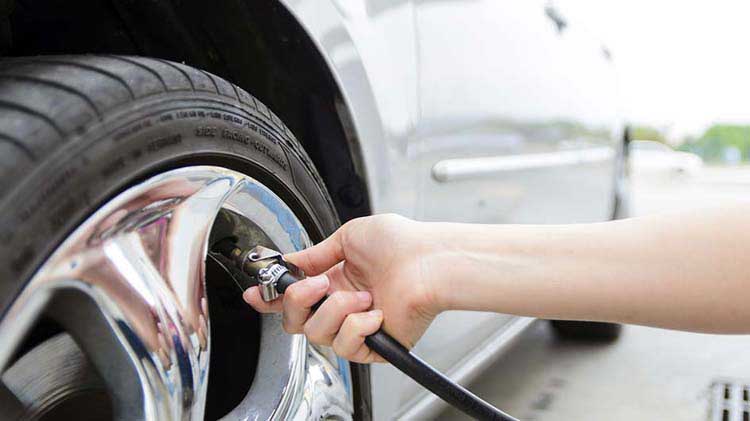Tips on what to do if your car breaks down
Learn some steps you can take to help handle an unexpected vehicle breakdown.
Experiencing a vehicle breakdown on a busy road can be dangerous. If your vehicle breaks down, prioritize your safety by considering these tips.
Car breaks down while driving
If you have a flat tire or your car engine stalls or dies, here are some actions you might consider:
- Turn on your hazard lights.
- Resist the urge to slam on the brakes.
- Use your car’s momentum and try to safely move away from traffic.
- Look for a safe spot on the side of the road, such as a wide shoulder and away from any curves in the roadway.
- Engage your emergency brake once you’ve come to a complete stop.
- Keep your seatbelt on and see that your doors are locked.
- Call for help — if you don't have the number for a local towing company or roadside assistance, call 911.
- Keep your phone close by to receive updates.
Vehicle stalls on the road
If you have a car broken down in the middle of the road, you may wonder what to do next. If this occurs, these tips may help keep you and others safe.
- Immediately turn on your hazard lights to warn nearby cars.
- If you are in heavy traffic, stay inside the vehicle until traffic has cleared.
- Very cautiously move away from your car (in the opposite direction of the busy road, typically far right) to a nearby sidewalk or wide shoulder, keeping a close eye on traffic.
- Call for roadside assistance or a tow truck to help remove your vehicle from the road as soon as possible. Depending on the severity of the breakdown and the car's location, you may need to call 911 instead.
Tips on what to do if your car breaks down on the highway
If your car breaks down on the highway, prioritize your safety.
- No shoulder available - if you can’t reach a shoulder, turn on your hazard lights and stay inside your vehicle. It’s generally safer to remain in your car than to attempt crossing a high-speed highway.
- Shoulder available - pull over as far onto the shoulder as possible, helping ensure you have space to exit safely if necessary. Before exiting your vehicle, carefully assess your surroundings and any oncoming traffic. Only exit your vehicle when there's a safe gap between passing vehicles. Once out of your car, get as far to the right off the shoulder as you can.
To learn more about how you can help stay safe if your car breaks down, check out the video below:
Shoulder of the road
If you've made it to a safer spot on the side of the road and traffic is clear, consider some additional action in addition to enabling your hazard lights and activating the emergency break:
- Pop the hood of your car to help alert other drivers.
- If you have them, place reflective markers such as triangles or cones, or road flares behind your vehicle.
- Turn on your car's interior lights if you don't have markers.
- Avoid attempting mechanical or electrical fixes beyond very basic checks like seeing that the terminals or cables aren’t visibly loose.
- Safely move a distance away from your car if you see smoke or flames.
- If your car is leaking fluids, you’ll likely need to take it to a professional mechanic.
Making repairs while stalled
If your car stalls, there are a few things you may be able to do to get back on the road, depending on your skill level. Safety is paramount, so be mindful to avoid putting yourself in a dangerous situation.
- Evaluate the exterior and under the hood of your car. Look to see that your battery is securely and correctly fashioned; battery issues can be a common culprit.
- If you need to fix a flat tire, only do so if you’re far off the road and have enough space to work safely.
If you feel unsure about performing repairs yourself, or during the process find that you are in over your head, opt instead to wait for assistance.
The information in this article was obtained from various sources not associated with State Farm® (including State Farm Mutual Automobile Insurance Company and its subsidiaries and affiliates). While we believe it to be reliable and accurate, we do not warrant the accuracy or reliability of the information. State Farm is not responsible for, and does not endorse or approve, either implicitly or explicitly, the content of any third-party sites that might be hyperlinked from this page. The information is not intended to replace manuals, instructions or information provided by a manufacturer or the advice of a qualified professional, or to affect coverage under any applicable insurance policy. These suggestions are not a complete list of every loss control measure. State Farm makes no guarantees of results from use of this information.




